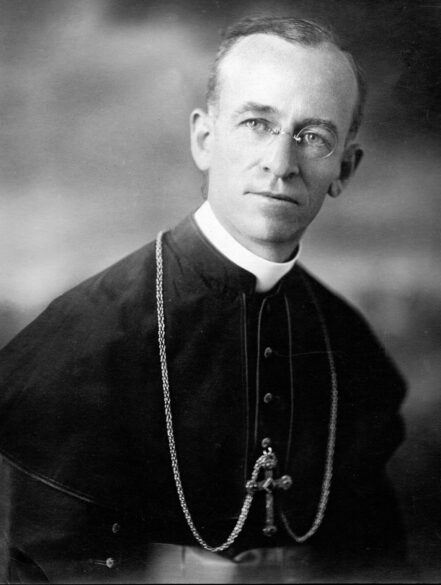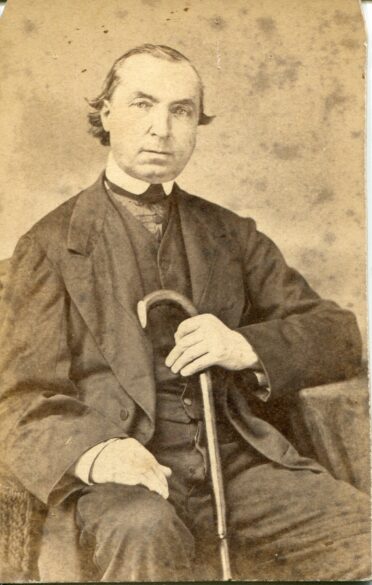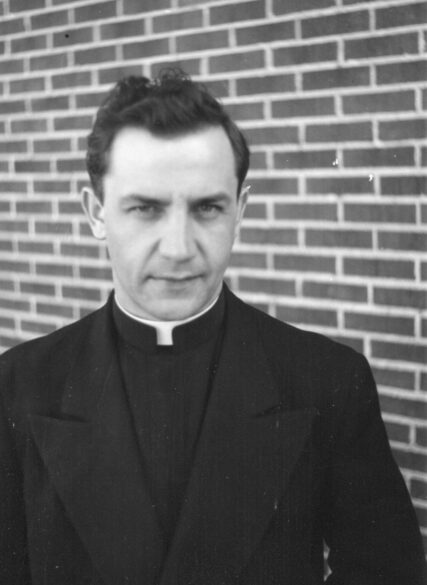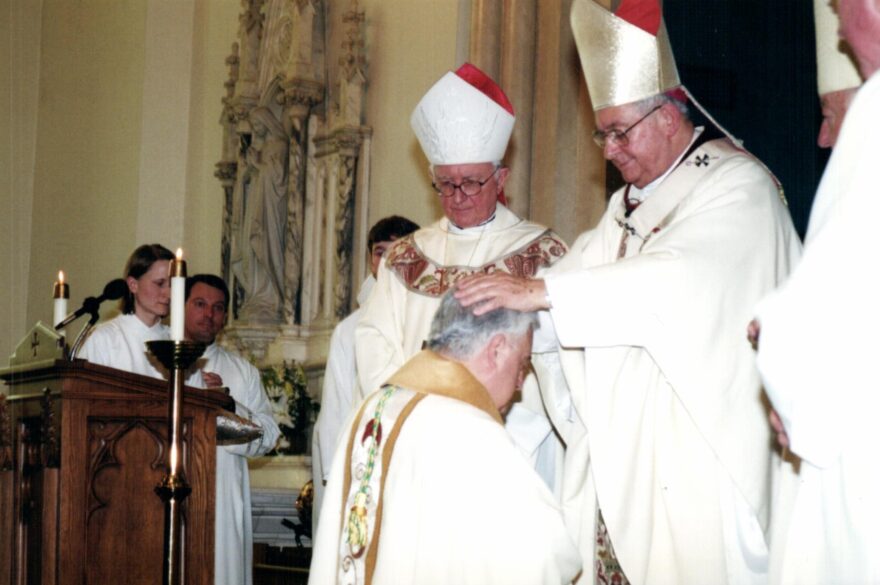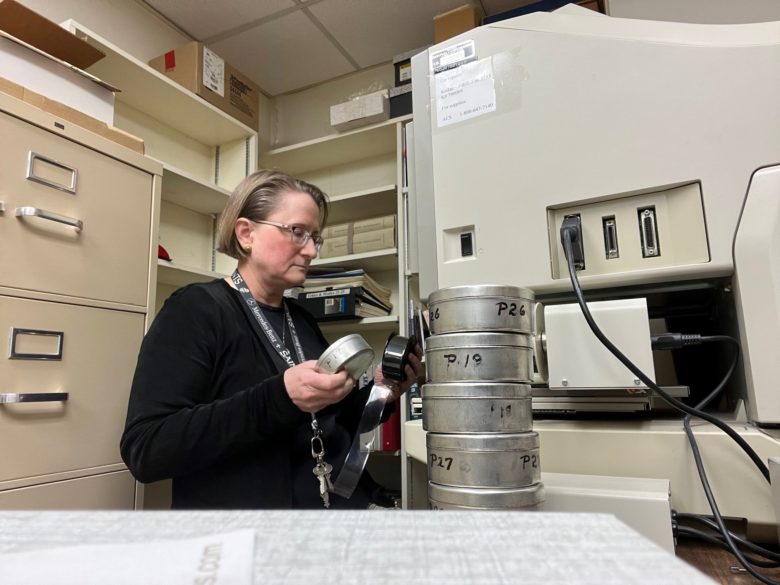From the Archives
By Mary Woodward
JACKSON – He only wanted to serve as a missionary priest. That was the spirit of a young James Oliver Van de Velde in May 1817 as he embarked on a rather circuitous journey to becoming the second bishop of our diocese 36 years later in 1853.
Bishop Van de Velde, SJ, is the shortest serving bishop of our diocese. His tenure lasted from his taking possession of his diocese on Dec. 18, 1853, until his death of Yellow Fever two years later on Nov. 13, 1855. All of our other bishops have served close to 10 years or more. But in his short time, +James Oliver accomplished some very important initiatives for the church.
Over the next couple of articles, I will share more about +James Oliver’s missionary ministry here in Mississippi. For now, let me give some background on his interesting odyssey to Natchez.
The following biographical details are culled from Bishop Richard Gerow’s landmark work, “Cradle Days of St. Mary’s at Natchez,” where the seventh bishop details the early days of Catholicism in the state up to the 1890’s.

Born on April 3, 1795, in Belgium near the town of Termonde, James Oliver Van de Velde was from a family of high social and official standing in the community. His family was a devout Catholic one and early on James Oliver showed signs of his desiring to enter the religious life.
When he turned 15, he was sent to boarding school, where he excelled in his studies, especially in the area of language. James Oliver was so proficient that a few years later at age 18 he was asked to teach his fellow students French and Flemish. During this time, he began to study English and Italian. These studies proved beneficial as he entered the Archepiscopal Seminary in Mechlin, Belgium, in his early 20’s, where he was again asked to teach his fellow students – this time adding Latin to his repertoire of languages.
It was in seminary that his desire to become a missionary began to burn within him. In early 1817, James Oliver was fortunate to meet Father Charles Nerinckx, a fellow Belgian, who was considered the Apostle to Kentucky. Father Nerinckx was returning through Belgium from a trip to Rome when he encountered the young Van de Velde at the seminary.
Sharing the need for priests to serve the missions in America, Father Nerinckx offered to bring James Oliver to the frontier missions of Bardstown, Kentucky, where Nerinckx was based. The seminary allowed for the transfer and he joined Nerinckx and a handful of other young Belgians who were bound for Georgetown College in Washington to enter the Jesuit novitiate there.
The plan for James Oliver to follow Nerinckx to Bardstown, however, was upended when during the transatlantic crossing the ship encountered a violent storm and Van de Velde was seriously injured. The loss of blood caused such weakness in him that upon arrival in the United States, he was taken to St. Mary’s Seminary in Baltimore to recover instead of travelling on to Kentucky. [Bishop William Houck was a graduate of St. Mary’s.]
Seeing the damage done, Nerinckx advised James Oliver to follow his fellow Belgian ship mates to Georgetown and the novitiate of the Jesuits. Again, his intellectual acumen led him to be asked by the faculty to not only be student, but also be a professor to his fellow classmates teaching “belles lettres” at Georgetown, a class studying the art and beauty of literature in and of itself. [Bishop Joseph Brunini graduated from Georgetown and was editor-in-chief of the yearbook.]
Ten years after arriving in America, James Oliver was ordained to the priesthood by Archbishop Ambrose Maréchal, SS, in Baltimore on Sept. 25, 1827. [Archbishop Maréchal also would have ordained to the priesthood John Joseph Chanche, SS, our first bishop, in 1819.] He served some missions in Maryland before being sent to the newly established Jesuit College in St. Louis where he taught rhetoric and math. In 1833, the college became the University of St. Louis and Van de Velde became its vice president and procurator.
Finally in 1837, Van de Velde made his solemn vows and became a professed member of the Society of Jesus. During an 1838 trip to New Orleans, he stopped in the freshly erected Diocese of Natchez and for two weeks served the Catholic congregation there which was still awaiting its first bishop – a foreshadowing of the eventual arrival of James Oliver as bishop in 15 years.
Van de Velde continued to be promoted at the University of St. Louis and in the Jesuits becoming president of the university in 1840 and vice provincial of the order in 1843. As vice provincial he oversaw the growth and flourishing of the Jesuit missions. His zeal for missions and his keen intellect and administrative skills did not go unnoticed by the Holy See so that on Dec. 1, 1848, he was appointed as the second bishop of Chicago. It required the cajoling of several friends and much prayer for him to accept, but in the end, he accepted and was ordained a bishop on Feb. 11, 1849, in the Church of St. Francis Xavier at the University of St. Louis by the Archbishop of St. Louis, Peter Richard Kenrick.
Thus, we will end this initial look at our second bishop – a man of extreme intellect and passionate zeal for the missions. In the next installment, we will explore how Bishop Van de Velde made his way from Chicago to Natchez and explore several of his initiatives in our diocese.
(Mary Woodward is Chancellor and Archivist for the Diocese of Jackson.)





